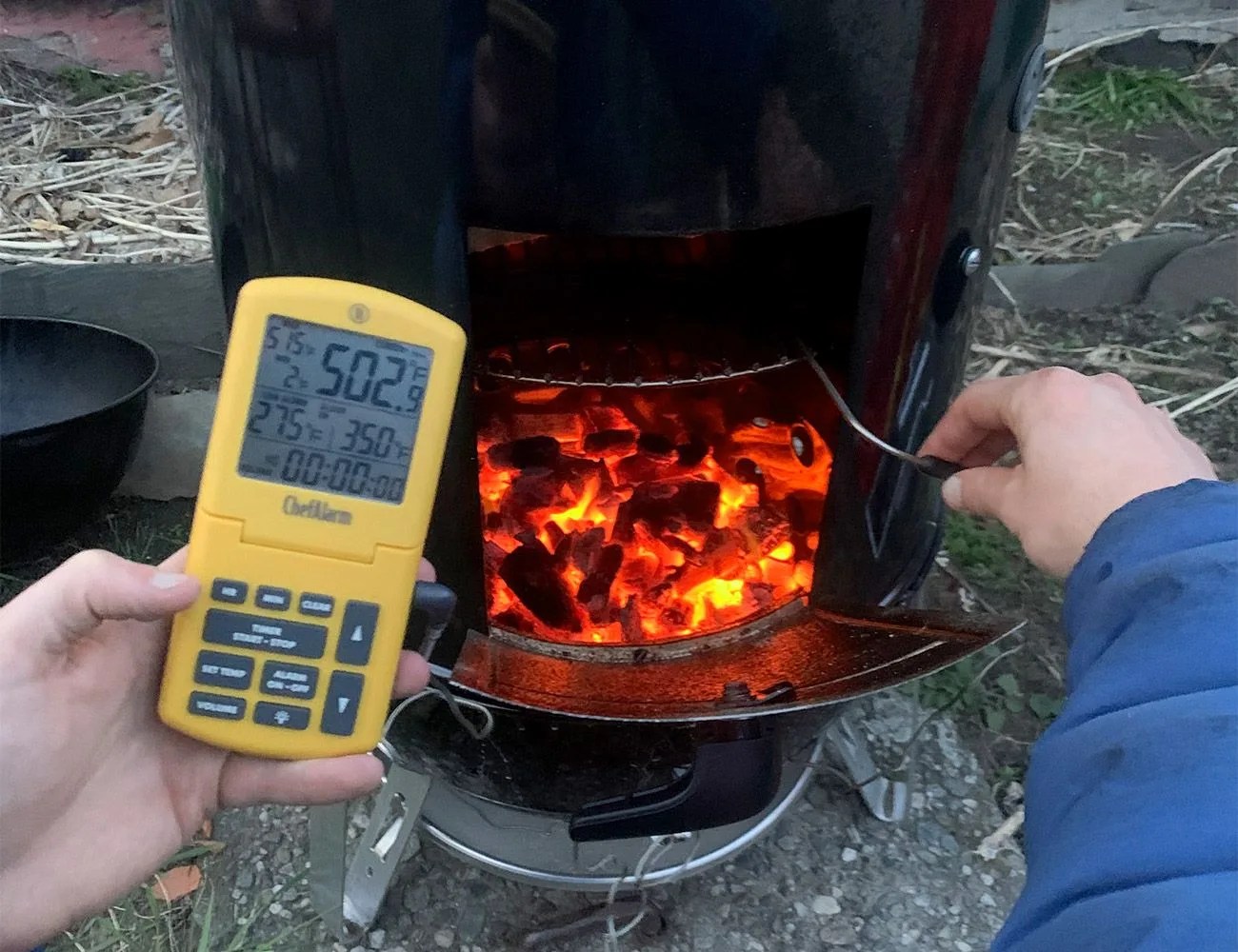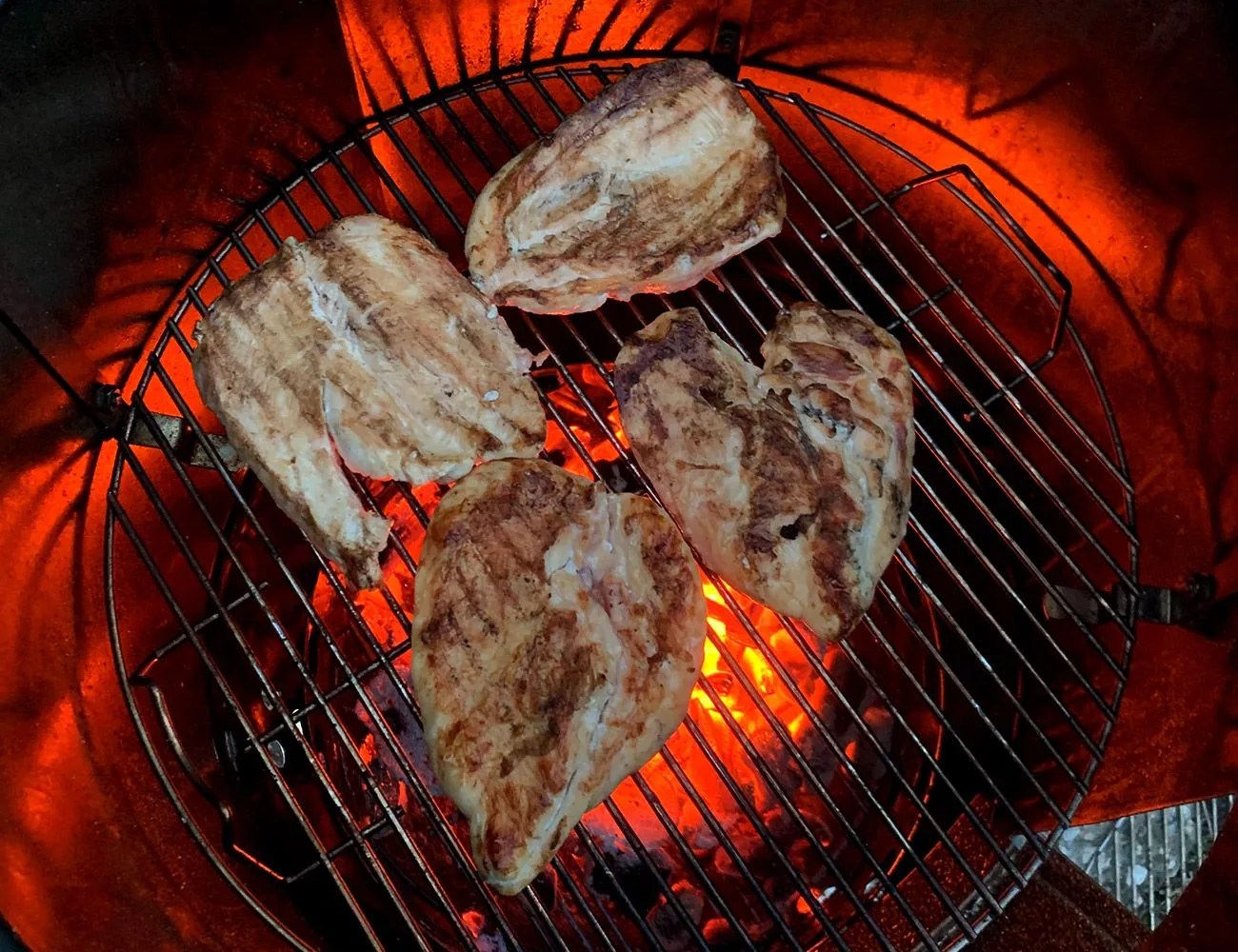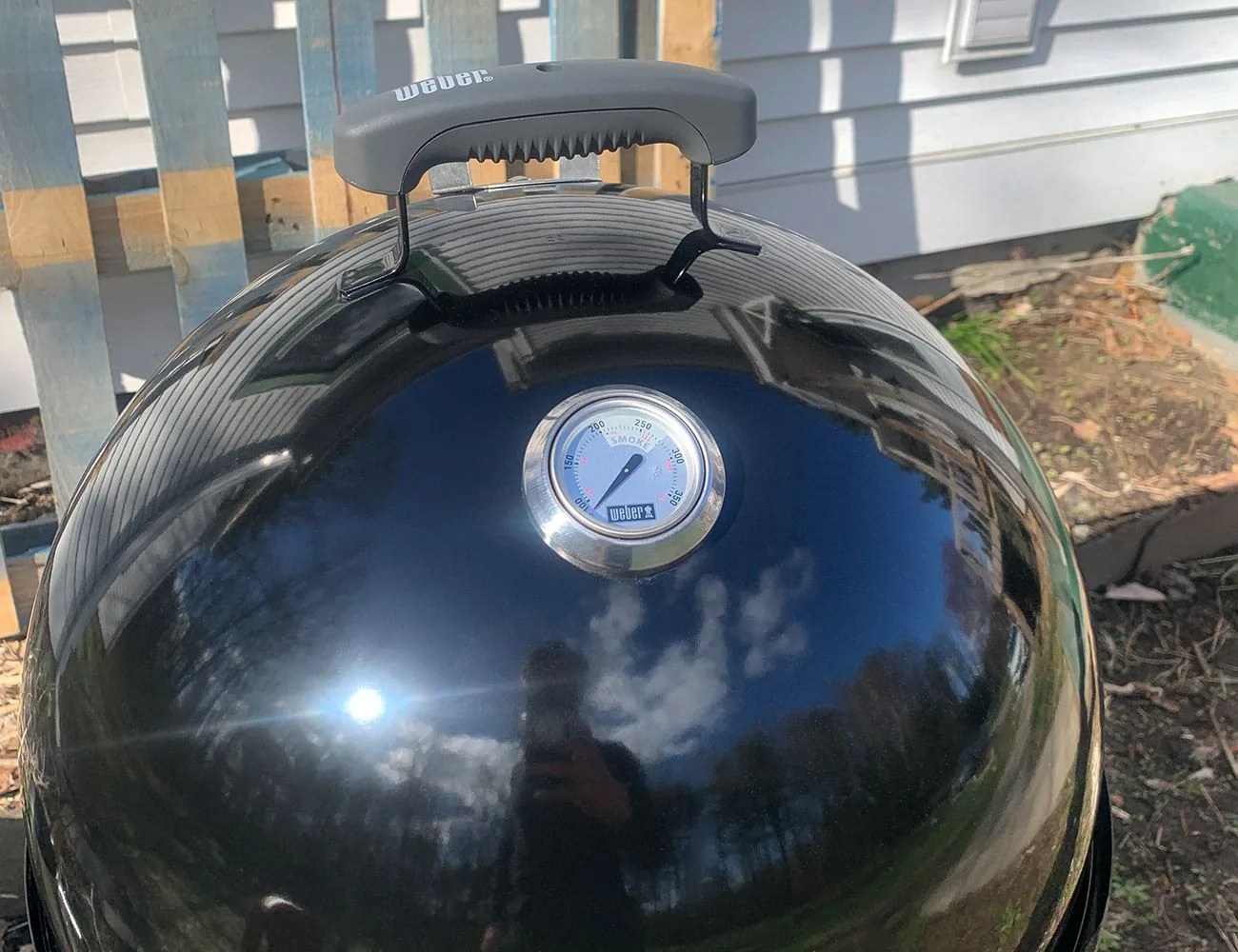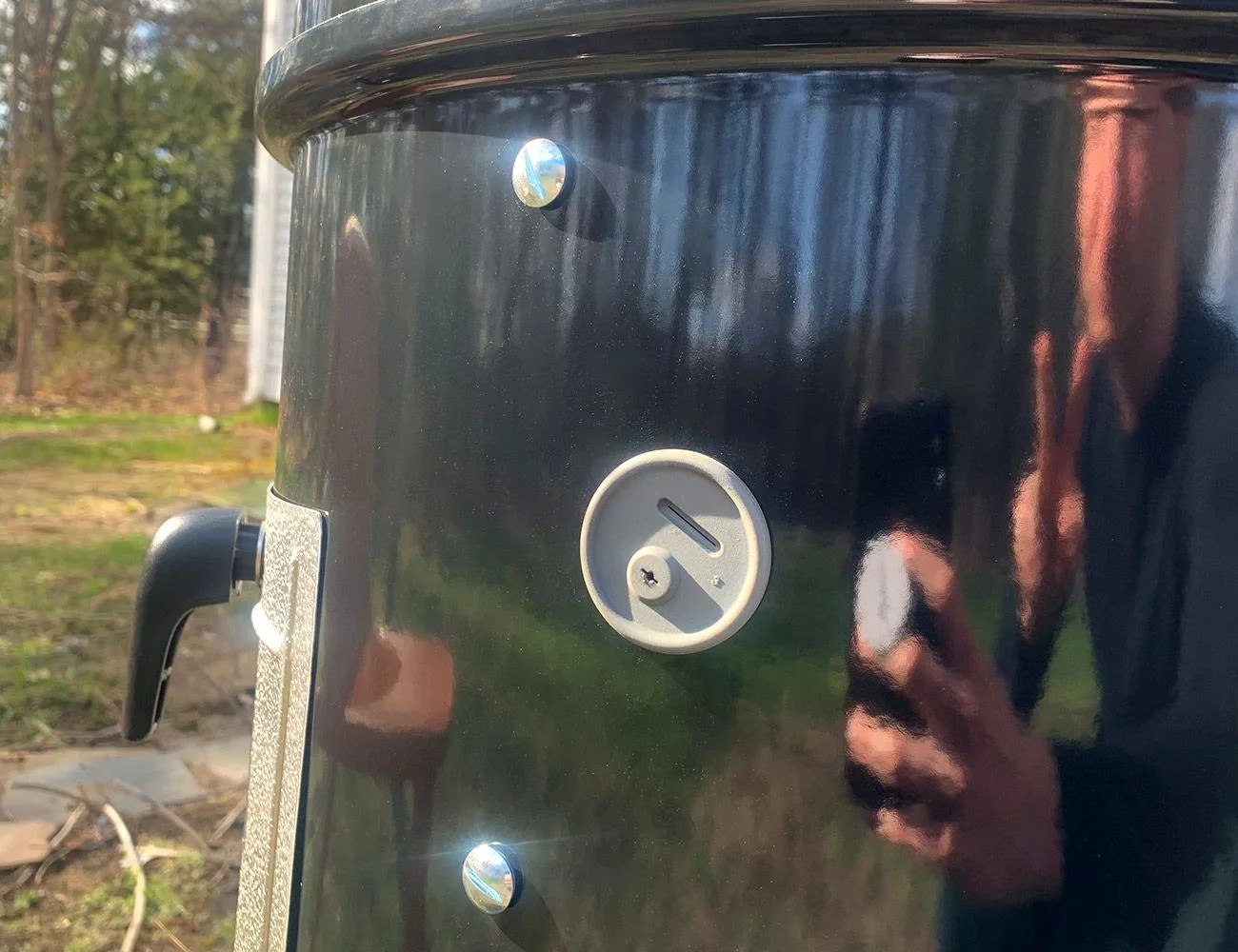Released in 1981, Weber’s Smokey Mountain cookers (sometimes shortened to WSM), like its more famous Kettle cookers, are deceptively elegant. Where offset smokers require frequent vent tinkering and fuel management, the Smokey Mountain holds temperatures steadfast from morning until night.
Where pellet smokers exact massive control through computers and dozens of built-in gadgets, the WSM does it with sound thermodynamics and a water pan. The product was popular at launch and remains popular today, undergoing very few design changes in its 40-plus years of existence.
The question, then: should you buy one? We tested the classic 18-inch model of this iconic grill to find out.
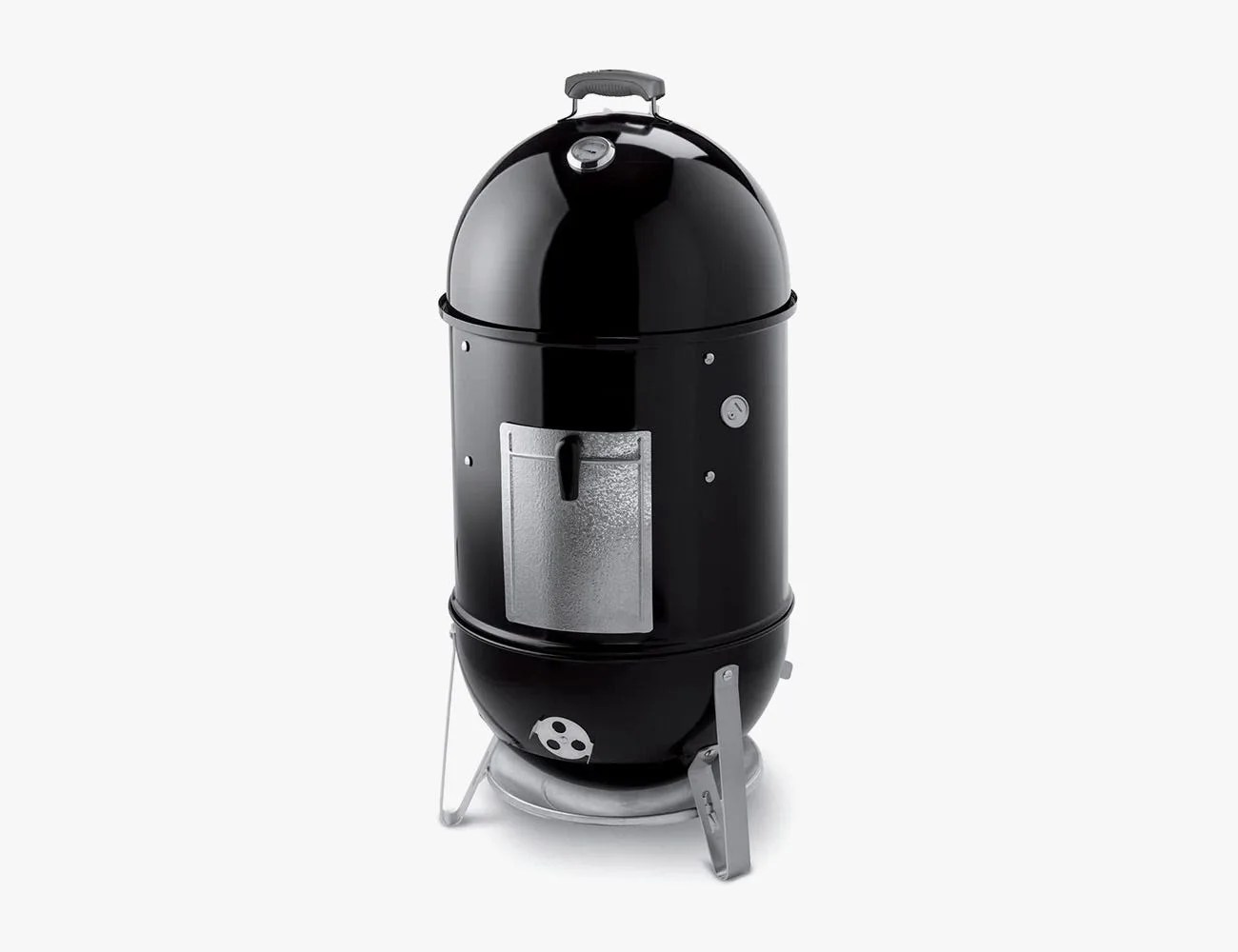 Amazon
AmazonWeber Smokey Mountain Cooker
-
$359.75 (8% off)
Pros
- Massive community
Cons
- Dome thermometer is not helpful
Weber 18-Inch Smokey Mountain Cooker: Key Specs
Weight: 21″ x 19″ x 41″
Dimensions: 39 lbs
Fuel Type: Charcoal
Available Sizes: 14″, 18″, 22″
Cooking Area: 481 sq. ft. (fits four racks of ribs)
What’s Good About the Weber Smokey Mountain Cooker
It’s stupidly simple to use
Barbecue and smoking is famously taxing, but using the Smokey Mountain — despite not being an automatic or machine-driven device — is not. Most of barbecuing is temperature control, and during testing, the WSM held a steady 225º–250º Fahrenheit temperature for close to 8 hours with virtually no work on my part (unless you count reading a book and slugging beers as work).
I set my temperature probe to ring if the temperature dropped below 225º F or rose above 250º F; it rang four times in my five-hour cook and five times in my eight-hour cook. I have some experience with barbecue pits and smoking meats and was expecting to have to at least shake the coal bed or play with the vents, but it is a suspiciously hands-off smoker once lit.

